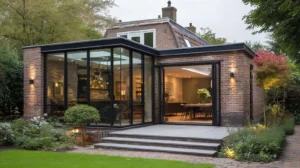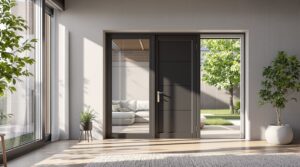Acoustic Windows: Creating Peaceful Environments in Urban Dutch Settings
Living in urban areas of the Netherlands often means dealing with significant noise pollution from traffic, neighbors, and construction. This can disrupt daily life, affecting sleep quality, productivity, and overall well-being. One effective solution to mitigate this issue is the use of acoustic windows, which are designed to reduce external noise and create a more peaceful living environment. In this article, we will explore the concept of acoustic windows, their benefits, and practical tips for implementing them in Dutch urban homes.
Basic Concepts
Before diving into the specifics of acoustic windows, it’s essential to understand some key terms and concepts related to soundproofing:
- Soundproofing: This refers to the process of reducing the transmission of sound from one space to another. It can be achieved through various methods, including absorption, reflection, and insulation.
- Acoustic Windows: These are windows specifically designed to reduce noise transmission. They often use specialized glass and frame designs to minimize sound entry.
- STC (Sound Transmission Class): A measure of how well a material or structure blocks sound. Higher STC ratings indicate better soundproofing.
Benefits of Acoustic Windows
Acoustic windows offer several benefits for urban Dutch homes:
- Reduced Noise Pollution: By minimizing external noise, acoustic windows create a quieter living space, improving sleep quality and reducing stress.
- Increased Property Value: Soundproofed homes are more attractive to potential buyers, as they offer a peaceful living environment.
- Enhanced Productivity: A quiet workspace can improve focus and productivity, making it ideal for home offices and study areas.
Types of Acoustic Windows
There are several types of acoustic windows available for Dutch homes:
- Double and Triple-Pane Windows: These windows use multiple layers of glass with air gaps in between, which significantly reduce noise transmission. Triple-pane windows are the most effective for noise reduction.
- Acoustic Glazing: This type of glass is specifically engineered to reduce noise transmission. It can be used in both new constructions and as replacements for existing windows.
- Active Noise-Canceling Glass: Innovative solutions like Harmony Glass by DeNoize offer active noise cancellation, allowing users to filter specific noises while still enjoying natural sounds.
Comparison of Acoustic Window Types
| Type of Window | Description | Noise Reduction |
|---|---|---|
| Single-Pane Windows | Basic windows with a single layer of glass. | Minimal noise reduction. |
| Double-Pane Windows | Two layers of glass with an air gap. | Significant noise reduction, up to 50%. |
| Triple-Pane Windows | Three layers of glass with air gaps. | High noise reduction, often over 70%. |
| Acoustic Glazing | Specialized glass designed for noise reduction. | Can reduce noise by up to 40 dB. |
| Active Noise-Canceling Glass | Uses technology to actively cancel noise. | Highly effective, customizable noise reduction. |
Practical Tips for Implementing Acoustic Windows
To effectively integrate acoustic windows into your home, follow these practical tips:
- Identify the Source of Noise: Determine where the noise is coming from to apply the most effective soundproofing techniques.
- Choose the Right Materials: Select windows with high STC ratings and consider using acoustic glazing or active noise-canceling glass.
- Ensure Proper Installation: Ensure that windows are well-sealed to prevent sound leaks. Use acoustic caulk and weatherstripping around frames.
- Consider Window Inserts: For existing windows, consider using acoustic window inserts, which can be installed without replacing the entire window.
- Maintain and Inspect Regularly: Regularly inspect and maintain your windows to ensure they remain effective in reducing noise.
Additional Soundproofing Techniques
Beyond acoustic windows, other soundproofing techniques can enhance noise reduction in your home:
- Seal Gaps and Cracks: Use caulk and weatherstripping to seal gaps around doors and windows.
- Acoustic Insulation: Use materials like mineral wool or glass fiber to insulate walls and ceilings.
- Resilient Channels: Decouple drywall from studs to reduce sound transmission through walls and ceilings.
Conclusion
Acoustic windows are a powerful tool for creating peaceful environments in urban Dutch settings. By understanding the benefits and types of acoustic windows available, and by following practical tips for implementation, homeowners can significantly reduce noise pollution and improve their quality of life. Whether through new constructions or renovations, investing in acoustic windows can enhance comfort, increase property value, and contribute to a healthier living environment.








